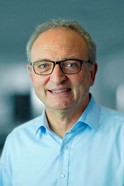
Welcome to the next PoreLab lecture! We will welcome Professor Rainer Helmig from the University of Stuttgard. Professor Helmig will present his research activities on:
Porous media free-flow coupling model concepts -from pore to Darcy-scale –
When: Thursday 6 October at 10 AM (Trondheim time)
Where: PoreLab premises, NTNU
you can also follow join with the following ZOOM link:
https://uio.zoom.us/j/65837085049?pwd=WjZianUyN3FJa2liQkxBbzQrOCtGdz09
Abstract:
Flow and transport processes in domains composed of a porous medium and an adjacent free-flow region appear in a wide range of industrial, bio-medical and environmental applications. Industrial applications range from flow in fuel cells to drying processes; possible bio-medical applications include the interplay of distribution processes in blood vessels and in the surrounding tissue. Applications in environmental systems include the infiltration of overland flow during rainfall, groundwater contamination due to infiltrating pollutants and evaporation from soil.
REV-scale models for the exchange of fluids, momentum and energy between a porous medium and an adjacent free-flow domain do not yet accurately account for the true complexity of transfer processes during evaporation from a porous medium. The complexity is controlled by non-isothermal multi-phase flow and thermodynamically driven component transport in both the porous medium and the free-flow part. The exchange is affected by a variety of processes at different interfaces (fluid-fluid-solid contact line and boundary or viscous sub-layer) on different time and length scales, which are not all accounted for in continuum models on the REV scale. The challenge lies in the fact that the relevant interfaces have complex geometries and dynamics that depend on the state of the system. Current model concepts capture these effects empirically on the REV scale. However, in order to make predictions on larger scales, the theoretical understanding of the processes on smaller scales is missing. The goal of this presentation is to show a newly develop model concept for coupling free flow with porous-medium flow on the pore-network scale to overcome the challenges mentioned above. In conclusion, selected examples are presented that chart the advantages and disadvantages of PNM to REV (Dracy-Scale) models.
